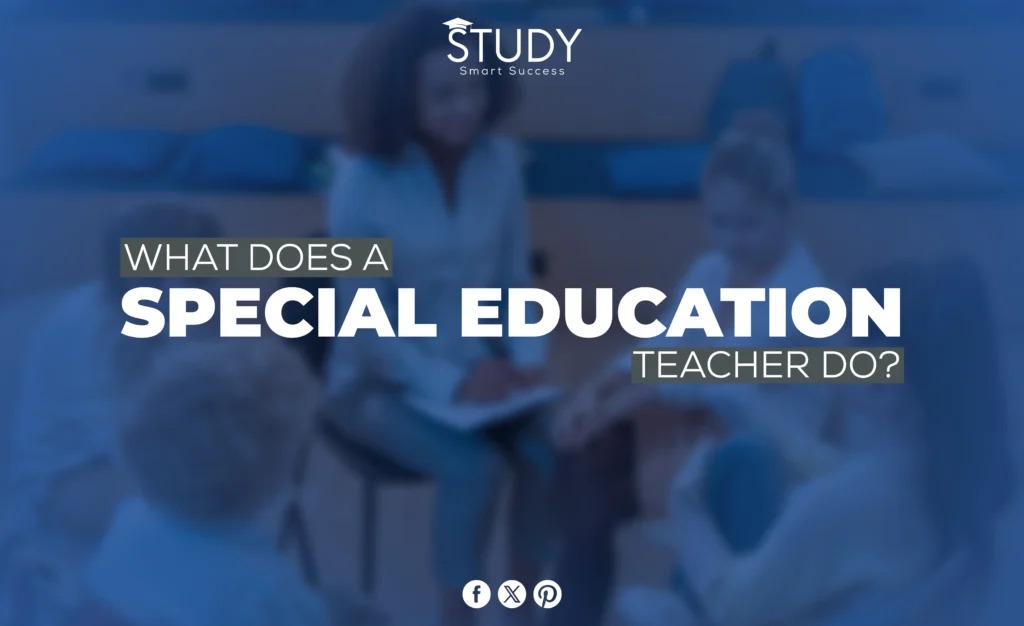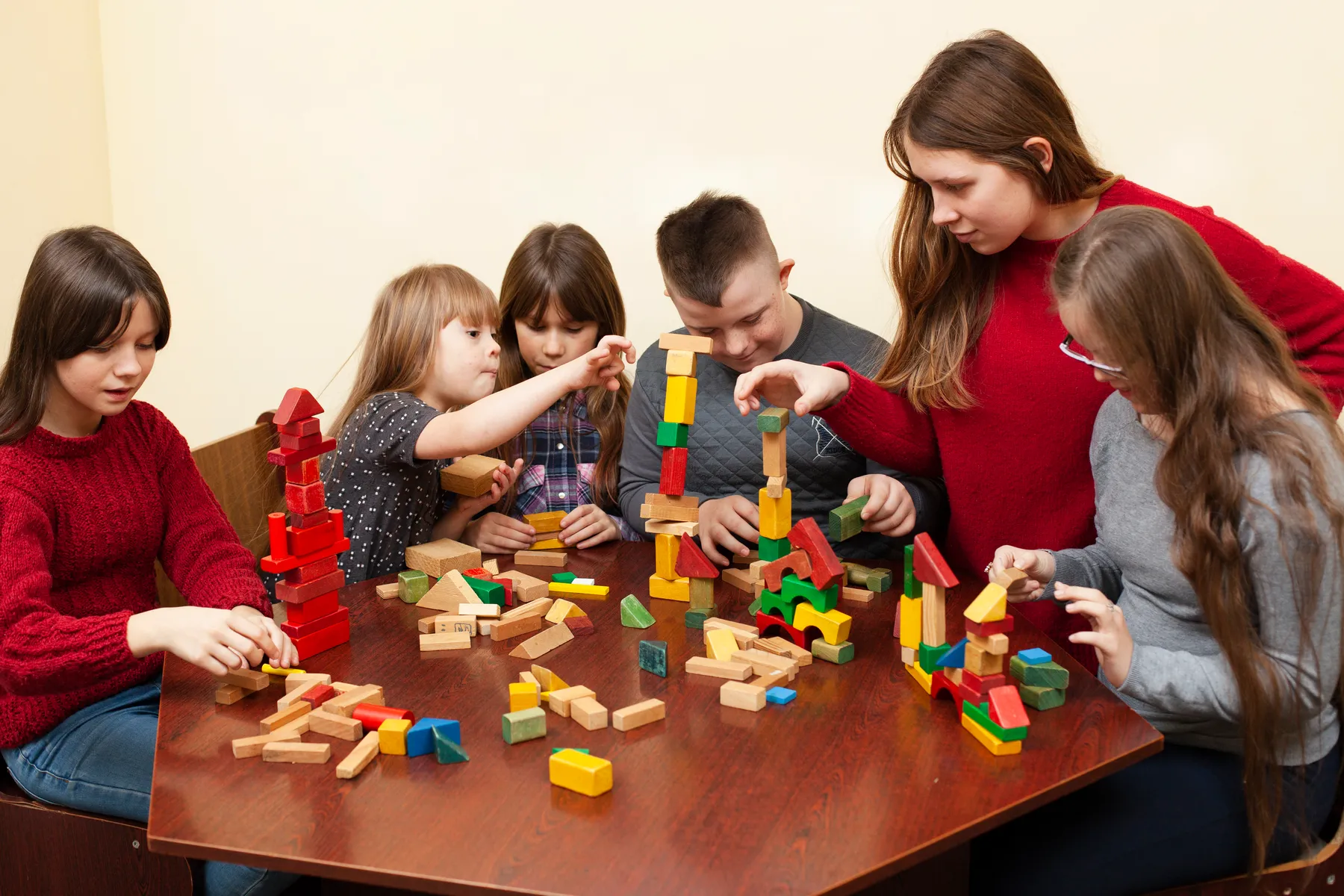The Role of a Special Education Teacher: Responsibilities, Challenges, and Rewards
Special education teachers are essential for ensuring that all students get a good education, no matter what their skills or problems are. Their hard work and knowledge help students with a wide range of learning needs reach their full potential. In this blog, we’ll talk about the many things that special education teachers have to do, the problems they face, and the positive changes they bring to their students’ lives.
Read our latest blog on Special Education Teacher Interview Questions.
Understanding the Scope of Special Education
Definition and Goals of Special Education
Special education is a way of teaching and helping kids with different learning needs tailored to each one. Its goals include helping students with disabilities do well in school, learn essential life skills, and fully participate in school and community life by giving them individualized teaching, making accommodations, and offering support services. Special education aims to ensure that all students, no matter their skills or challenges, are included, treated fairly, and have access to a good education.
Legal Requirements and Regulations Guiding Special Education Services
A thorough legal framework protects the rights of disabled pupils and ensures their proper education in special education. The Individuals with Disabilities Education Act (IDEA) protects students with disabilities and their families, requires a free appropriate public education (FAPE) in the least restrictive environment (LRE), and establishes IEP development and implementation procedures. Section 504 of the Rehabilitation Act and the ADA give further protections against discrimination and equal educational opportunities for disabled people.
Diversity of Students and Disabilities Encountered in Special Education Settings
Special education settings encompass a diverse population of students with a wide range of disabilities, challenges, and strengths. These may include:
- Disabilities that make it hard to learn, like dyslexia, math problems, and problems understanding sounds
- Intellectual problems, such as Down syndrome and intellectual developmental disorder
- Spectrum illnesses for people with autism, like autism and Asperger’s syndrome
- Disorders of the mind and emotions, such as ADHD, anxiety, and sadness in children and teens
- Speech and language problems, like stuttering, problems with pronunciation, and language delays
- Some physical problems are cerebral palsy, spina bifida, and muscle dystrophy.
- impairments of the senses, like not being able to see or hear or being dumb and blind
- Epilepsy, asthma, and diabetes are some other health problems that hurt people.
Special education teachers and professionals collaborate with students, families, educators, and support staff to provide individualized instruction, interventions, and support services encouraging academic, social, and emotional progress for kids with disabilities.
Collaborating with Students, Parents, and Colleagues
Building Rapport and Trust with Students with Special Needs
Getting to know and trust kids with special needs is essential to build good relationships and help them grow academically and socially. Teachers of students with special needs can build relationships by:
- They show compassion, patience, and understanding of each student’s skills and weaknesses.
- They are using students’ interests, preferences, and skills in the activities and interactions that teachers use to teach.
- Giving kids compliments, encouragement, and positive feedback can help them feel better about themselves and be more motivated.
- They are making the classroom a place where everyone feels welcome and supported, where students feel valued, accepted, and safe to speak their minds.
Communicating Effectively with Parents and Guardians to Ensure Collaboration in the Education Process
Effective communication with parents and guardians fosters collaboration and partnership in education. Special education teachers can communicate effectively by:
- Open, honest, and courteous communication with parents, welcoming their feedback, questions, and concerns.
- Regularly updating children’s progress, achievements, and growth areas through parent-teacher conferences, progress reports, and communication logs.
- Working with parents to create and revise IEPs to address children’s needs, goals, and adjustments.
- They are helping parents navigate the special education system and find community resources and support for their children.
Collaborating with General Education Teachers, Administrators, and Support Staff to Create Inclusive Learning Environments
Creating inclusive learning settings where all students thrive requires collaboration with general education teachers, administrators, and support workers. Special education instructors can collaborate well by:
- Discussing student needs, tactics, and instructional approaches in team meetings, collaborative planning sessions, and professional learning communities.
- Training, equipping, and supporting general education instructors to apply accommodations, modifications, and inclusive practices.
- Promoting disability inclusion in mainstream education and peer support and social integration.
- Advocate for inclusive education resources, policies, and activities with administrators to foster a school culture of acceptance and diversity.
Special education teachers can build supportive, inclusive, and empowered learning environments that encourage academic, social, and emotional growth for all children with special needs by stressing cooperation with students, parents, and colleagues.
Designing and Implementing Individualized Education Plans (IEPs)
Conducting Assessments to Identify Students’ Strengths, Challenges, and Learning Goals
They need to give them thorough tests to know what kids are good at, what they need help with, and their learning goals. Teachers of kids with special needs can:
- Use standardized exams, observations, interviews, and curriculum-based evaluations to assess students’ intellectual, social, emotional, and behavioral functioning.
- Work with school psychologists, speech-language pathologists, and occupational therapists to evaluate and gather multidisciplinary data.
- Assess students’ strengths, weaknesses, and customized learning goals to inform their IEPs.
Developing Personalized IEPs Tailored to Meet the Unique Needs of Each Student
Developing personalized IEPs requires careful consideration of students’ unique needs, abilities, and learning styles. Special education teachers can:
- Develop SMART IEP goals and objectives with students, parents, and other IEP team members.
- Based on students’ needs and goals, determine appropriate adjustments, modifications, and support services to ensure access to the general education curriculum and meaningful school involvement.
- The IEP includes students’ current performance, annual goals, progress monitoring measures, and transition plans to match their needs, strengths, and ambitions.
Monitoring Progress, Adjusting Interventions, and Documenting Outcomes to Support Student Growth
Monitoring progress, adjusting interventions, and documenting outcomes are essential to effective IEP implementation. Special education teachers can:
- Apply evidence-based interventions and instructional strategies to kids’ IEP goals and provide continuing support and scaffolding to enhance skill development and academic success.
- Data collection, progress-tracking tools, and continuing assessments should be used to alter interventions and instructional approaches based on student responses.
- Stay current on students’ intellectual, social, and emotional development by recording their progress, successes, and areas for improvement.
- Hold regular IEP meetings with students, parents, and other IEP team members to monitor progress, discuss goal and intervention changes, and ensure collaboration and communication.
Specific assessments, specific IEPs, and efficient progress monitoring allow special education teachers to meet each student’s unique requirements and foster academic, social, and emotional growth.
Differentiated Instruction and Adaptations
Adapting Curriculum and Instructional Materials to Accommodate Diverse Learning Styles and Abilities
Adapting curriculum and instructional materials ensures that all students, regardless of their learning styles and abilities, can access and engage with the content. Special education teachers can:
- Change curriculum material, timing, and complexity to suit students’ learning styles, interests, and readiness.
- To accommodate different learning styles, include audiovisual, manipulative, and tactile materials.
- Multi-sensory instruction, interactive activities, and hands-on experiences improve student engagement and comprehension.
Implementing Strategies for Scaffolding Learning and Providing Additional Support as Needed
Differentiated instruction in special education requires scaffolding and assistance. Special educators can:
- Help students gain confidence by breaking down complex tasks into smaller, achievable steps with specific teaching and guided practice.
- Help kids understand and complete assignments independently with prompts, cues, and visuals.
- Encourage peer collaboration, cooperative learning, and tutoring to build social skills, communication, and support networks.
Utilizing Assistive Technology and Adaptive Equipment to Enhance Learning Opportunities
Assistive technology and adaptable devices help disabled children study and access the curriculum. Special educators can:
- Use text-to-speech, speech recognition, graphic organizers, and communication devices to help pupils communicate, organize, and process information.
- Provide adaptive seats, ergonomic tools, and sensory aids to meet kids’ physical, sensory, and motor demands and encourage classroom involvement.
- Work with assistive technology specialists, occupational therapists, and other professionals to find and implement solutions and adaptations that match students’ needs and goals.
Differentiated instruction and adjustments can help special education teachers establish inclusive learning environments that empower all children to attain their full potential, engage and succeed, and accommodate unique learning styles and abilities.
Behavior Management and Support
Implementing positive behavior interventions and supports (PBIS) to promote a positive learning environment
PBIS fosters a welcoming classroom. Teachers use PBIS to teach and praise good behavior rather than punishing bad. This technique helps set goals, teach social skills, and encourage desired behaviors. PBIS methods include school-wide behavior goals, positive reinforcement, and data analysis to make decisions. PBIS helps all students achieve academically and socially by promoting respect, accountability, and resilience.
Addressing challenging behaviors through proactive strategies and individualized interventions
To help students with behavioral behaviors, educators utilize proactive and personalized approaches. Identifying triggers and preventing bad habits are proactive. Changes to the learning environment, clear expectations, and student choice and autonomy may be needed. Instructors also tailor interventions to students’ capabilities, needs, and preferences.
Alternative behaviors, social skills, behavior contracts, counseling, and support may be used. Teachers address problem behaviors and provide individualized support to help kids self-regulate and achieve in class.
Collaborating with behavior specialists, counselors, and other professionals to support students’ social-emotional development
Teachers, behavior experts, counselors, and others must work together to support students’ social-emotional development. These specialists can evaluate pupils, develop assistance plans, and use evidence-based solutions. Behavior specialists and counselors diagnose and treat behavioral difficulties, counsel students and families, and give services.
Special education teachers collaborate with professionals to administer interventions, track progress, and make changes. Professionals share knowledge, resources, and best practices to improve interventions and student social-emotional well-being. Schools develop a professional network through collaboration to address all kids’ needs.
Conclusion
This topic has covered the many duties of special education teachers. Students with impairments, learning differences, and behavioral issues depend on these committed experts. To help students succeed, special education teachers create and implement individualized education plans (IEPs), adapt curricular materials, differentiate instruction, and work with parents, colleagues, and other professionals. They champion inclusive education, ensuring access, equity, and excellence for everyone.
I encourage and support special education teachers. Accept your critical role in creating inclusive school environments where all kids can grow and succeed. Accept problems as opportunities for growth and innovation and celebrate student triumphs and milestones. Remember that your dedication, enthusiasm, and advocacy help those you serve. Remember to consider your effect as an advocate for education equity, access, and inclusion. We can make society more inclusive and egalitarian one classroom at a time.



